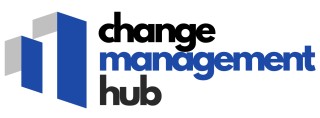
Understanding Supplier Performance Management
Defining the Framework for Supplier Performance Management
In the business landscape, supplier performance management (SPM) emerges as a pivotal element that ensures the seamless functioning of the supply chain. For enterprises keen on maintaining a competitive edge, effective management of suppliers goes beyond mere transactions. It encompasses assessing and enhancing supplier performance through consistent evaluation.
SPM revolves around establishing performance indicators and metrics. Key performance indicators (KPIs) are utilized to monitor aspects like quality, delivery, cost, and compliance. These metrics play a crucial role in forming a solid foundation for managing supplier relationships. As businesses aim to mitigate risks, performance reviews become critical for spotting potential issues before they snowball into larger supply chain disruptions.
Utilizing Data for Robust Supplier Evaluation
The importance of real-time performance data in ensuring supplier excellence cannot be overstated. High-quality data enables procurement teams to make informed decisions swiftly, thus ensuring suppliers are aligned with business objectives. In the age of digital transformation, management software tools such as Kodiak Hub offer dynamic solutions that facilitate the amalgamation and analysis of performance data.
Through continuous data monitoring, businesses can uncover patterns indicating supplier risk or non-compliance, empowering them to optimize supplier relationships. The advent of such management tools has revolutionized how companies consider long-term supplier management strategies, ensuring these relationships add value to the broader supply chain.
For businesses focused on improving procurement and supplier performance, it is essential to integrate strategic performance management approaches. Understanding the purpose and methodology of supplier performance management gives a company the leverage to drive systemic change across its supply chain operations. Dive deeper into the key element of change management to enhance understanding and application.
The Role of Supplier Performance in Change Management
The Intersection of Supplier Performance and Successful Change Management
In the ever-evolving business landscape, managing supplier performance effectively has become a crucial aspect of initiating and sustaining successful change management initiatives. Suppliers play an integral role in the supply chain, and their performance can significantly impact the efficiency and effectiveness of change processes. Supplier performance management (SPM) serves as a cornerstone for supplying accurate and timely data that can drive change. By leveraging various performance metrics and Key Performance Indicators (KPIs), businesses can monitor and evaluate the supplier's contribution to the organization's change management strategy. The real-time evaluation of supplier performance through performance management software can lead to enhanced supplier relationships and mitigate potential supplier risk. Performance metrics such as quality delivery, cost efficiency, time adherence, and compliance are essential components of the supplier performance landscape. These indicators not only measure current supplier competencies but also provide insights into areas that require improvement, influencing procurement strategies. A well-structured SPM framework enables organizations to ensure suppliers adhere to the highest quality standards and align with the overall strategic vision. Supplier performance data holds the potential to uncover hidden risks within the supply chain, allowing organizations to anticipate and address supplier issues before they escalate into larger problems. This proactive supplier risk management approach ensures a steady supply chain and minimizes disruptions, aiding in a smooth transition during change initiatives. Moreover, establishing long-term partnerships through supplier relationship management is critical. It enables continuous performance reviews and dialogues between stakeholders, fostering a partnership culture where suppliers become allies in achieving business objectives. In alignment with this practice, a robust management supplier framework fortifies the supply chain's resilience and adaptability to change. To delve deeper into how supplier performance influences change management initiatives, consider exploring the article, essential questions to ask senior leaders during change management, which provides further insight into stakeholder engagement during times of change.Key Challenges in Supplier Performance Management
Unveiling Challenges in Supplier Performance Management
Supplier performance management (SPM) is essential for maintaining an efficient supply chain. However, there are numerous challenges that businesses face in this complex process. A key issue is the alignment between vendors and organizational objectives within the supply chain. Ensuring that suppliers meet defined performance standards is crucial for maintaining the quality and reliability of goods or services procured. One significant challenge is the collection and analysis of accurate performance data. The quality and timeliness of performance metrics are vital for judging supplier capabilities. Accurate data collection often requires robust management software. Yet, many businesses still rely on archaic systems or manual processes, leading to discrepancies and delays. Another challenge is the lack of real-time monitoring of supplier risk and timely performance reviews. Without real-time data, businesses are often behind in addressing potential risks and compliance issues that could impact the supply chain. Integrating a careful supplier risk management approach can mitigate these concerns. Moreover, cost and delivery play a pivotal role in supplier management. A balance between cost-efficiency and quality delivery needs to be struck. Procurement teams often face the challenge of managing supply costs while ensuring high-quality delivery within agreed timelines. Ultimately, strengthening supplier relationships remains a critical challenge. Developing long term partnerships enables businesses to achieve better compliance and more stable supplier performance. This includes regular engagement and performance reviews, benefiting both parties by fostering a collaborative environment. For a deeper understanding of these intricacies, recognizing the differences between workflows and processes in change management can provide a clearer perspective on optimizing supplier performance. (Follow this link)Strategies for Effective Supplier Performance Management
Strategizing for Optimal Supplier Performance
Effective change management relies on the seamless coordination between various components of the supply chain. Enhancing supplier performance management is essential in achieving this coordination. Here are some strategies one can employ:- Utilize Advanced SPM Software: Investing in robust supplier performance management software can aid in the real-time tracking of supplier performance metrics. This ensures suppliers are meeting compliance standards and helps identify potential risks early. By monitoring quality, delivery, and other KPIs, businesses can maintain a high level of supply chain efficiency.
- Establish Clear Performance Indicators: Clearly defined performance indicators are critical for measuring supplier performance. These indicators should be aligned with the organization's overall business objectives, focusing on quality, cost, and delivery metrics.
- Foster Strong Supplier Relationships: Relationship management should be at the forefront of any supplier strategy. Regular performance reviews and open communication channels help build trust, allowing for a proactive approach to issues that may arise.
- Implement Risk Management Practices: Identifying supplier risks and developing mitigative strategies can shield the business from potential disruptions. Regular audits and compliance checks help ensure suppliers are managing risks effectively.
- Leverage Data Analytics: Analyzing performance data is vital in identifying trends and insights that can drive decision-making. This data-oriented approach provides a deeper understanding of supplier contributions and areas that are ripe for improvement.
- Focus on Long Term Success: Building long-term partnerships with suppliers can help ensure sustainable performance improvements. Encouraging collaboration and shared goals can lead to better quality and reduced costs over time.
Case Studies: Successful Change Management Through Supplier Performance
Real-World Applications of Supplier Performance Management
In the realm of change management, the success stories of companies effectively leveraging supplier performance management are not just instructive but inspiring. Here are a few cases that highlight how businesses have enhanced their processes.- Streamlined Supply Chain Operations: One organization, facing persistent supply chain delays, implemented a comprehensive supplier performance management system. By meticulously evaluating supplier performance metrics and key performance indicators (KPIs), they identified several bottlenecks impacting quality and delivery. This enabled them to address these issues promptly, ensuring suppliers adhered to compliance standards and achieved timely deliveries.
- Risk Management and Cost Efficiency: Another case involved a multinational corporation that was struggling with supplier risk and cost overruns. By utilizing advanced management software and real-time data analytics, they established a robust supplier relationship management framework. This proactive approach not only reduced supplier risks but also enhanced their procurement efficiency, leading to significant cost savings.
- Enhancing Long-Term Supplier Relationships: A company focused on creating long-term relationships with its suppliers saw dramatic improvements by conducting regular performance reviews. Through systematic supplier performance evaluations, management was able to align business goals with supplier capabilities. Frequent performance data checks contributed to maintaining high-quality delivery standards and cultivated trust, fostering stronger supplier collaborations over time.
- Seamless Integration of SPM Software: A forward-thinking enterprise adopted the latest SPM software, such as Kodiak Hub, to centralize all supplier performance data. This shift allowed them to gain insights quickly and make data-driven decisions. The integration facilitated enhanced supplier management and compliance, ensuring a more resilient supply chain.













